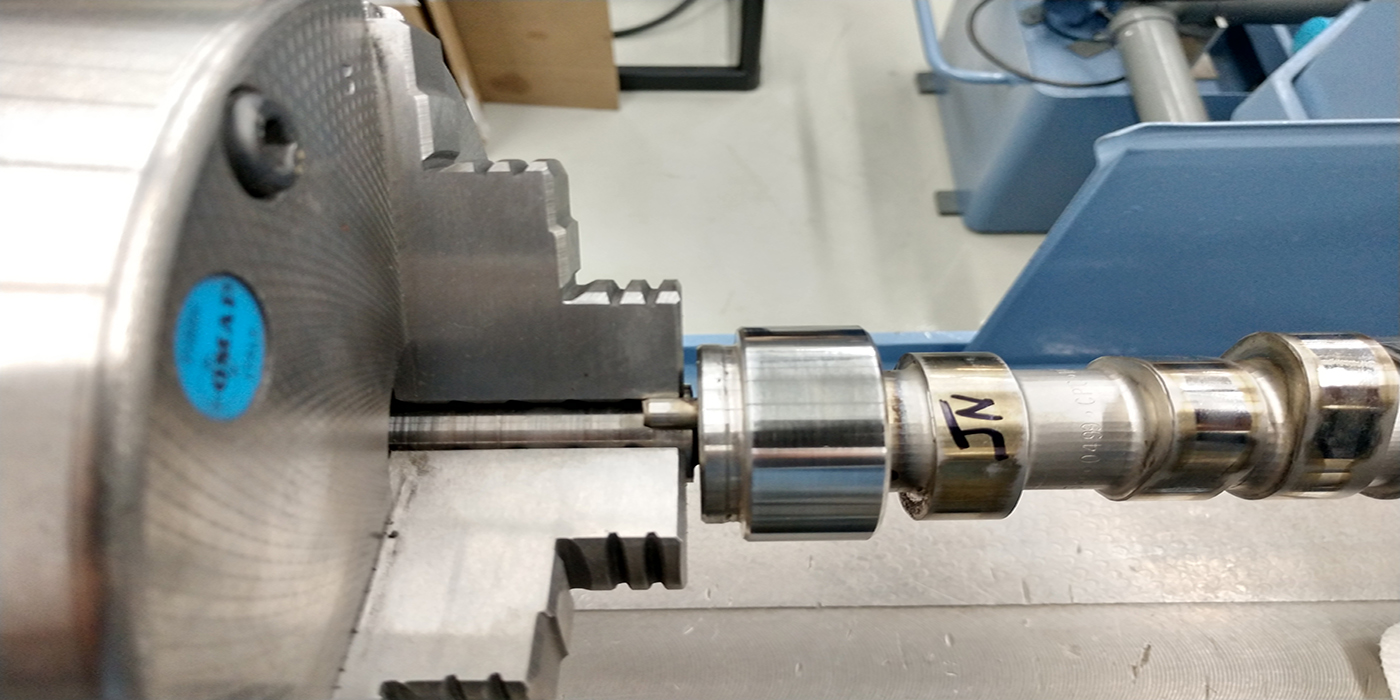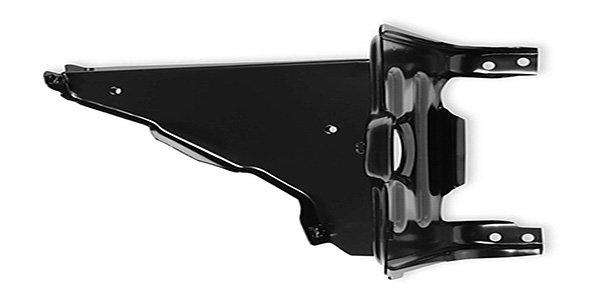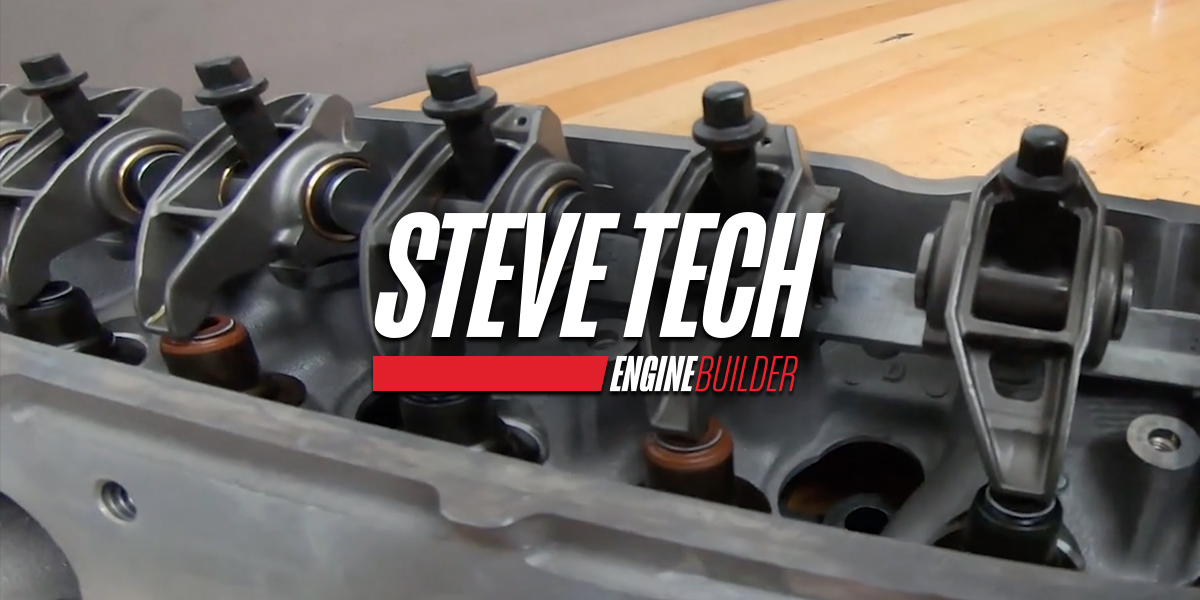Annual production of remanufactured engines
climbed from 1.32 million in 1995 to 1.57 million during 1996
– an increase of about 19.4%.
Engine production figures are based on a universe of 120 U.S.
and Canadian rebuilders that rebuilt an average of 13,113 short,
long and complete engines each last year. Survey results were
compiled from a detailed questionnaire mailed to 95 PERs during
the first week of January. A follow-up mailing was done in early
March. In total, 27 PERs responded for an effective return rate
of 30.4%.
Market data is broken out by an ALL, BIG and SMALL category of
respondents. BIG PERs are those that rebuild at least 10,000 long
or 10,000 short blocks per year. SMALL PERs are those that remanufacture
less than 10,000 long or 10,000 short blocks per year.
Our classification of BIG and SMALL PERs is made soley for the
purpose of more clearly defining the impact of large and small
rebuilders in various production, business management and market
categories. This year, 44.4% of all respondents were BIG PERs.
Personal and telephone interviews with a variety of PERs and their
parts and equipment suppliers were undertaken to discuss and interpret
results from this survey. Information in this article is a condensed
version of a comprehensive PERA Market Report which is provided
to the Production Engine Remanufacturers Association (PERA) for
distribution to its members.
PERs accounted for between 48% to 55% of all engines rebuilt during
1996. This market share range is based on combining PER engine
production with the 1.31 million to 1.7 million rebuilt engines
produced by the custom engine rebuilder/machine shop market (See
Automotive Rebuilder magazine’s June 1997 issue – "Machine
Shop Market Profile," page 36). The 1.31 million to 1.7 million
engines rebuilt by custom engine rebuilders is based on average
annual production of 6,000 to 8,000 "full service" machine
shops in the U.S.
Total engines rebuilt by PERs and machine shops during 1996 was
2.88 million to 3.27 million units. During the prior year’s (1995)
production, total engines produced by PERs and custom engine rebuilders
was 2.67 million to 3.14 million. Even though PERs, as a group,
saw a significant average increase – about 19.4% – total demand
for rebuilt engines in 1996, industry-wide, was mitigated by a
decline in engines produced by custom engine rebuilders. Machine
shops, nationwide, saw a drop of about 7% in rebuilt engine demand.
PERs, either directly or indirectly, are largely responsible for
the custom engine rebuilders’ loss in market share. Many machine
shops have lost engine sales to retailers such as AutoZone, Pep
Boys, etc., especially on the top five engines sold in the U.S.
market. In addition to competition from retailers, many PERs have
become much more aggressive in opening WD outlets throughout the
country. These WD outlets may be owned by a PER, or they may be
independents selling on a fee, shared inventory or even consignment
basis.
Loss of market share on popular engines is not just being experienced
by the custom engine rebuilder or machine shop. Several small
to midsize PERs, e.g., those rebuilding fewer than 40 engines
per day, have also felt the impact of retail engine sales in their
markets.
"I think retailers have definitely cost us engine sales in
increasing numbers," said one PER who sells primarily to
service garages. "The top five engines sold by PERs nationwide,
represent about 55% of the total number of engines sold. In the
case of our own company, those top five engines only represent
about 38% of our total units sold. I think those lost sales are
going to people like AutoZone, Pep Boys, Western Auto, and the
Value Line of engines being marketed through NAPA."
As this PER pointed out, such a situation is not just represented
by the loss of an engine sale. It also shows up as a loss in profit
margin. "We haven’t stopped trying to sell the popular engines
to our customer," said the PER. "But when we do sell
a 350 or 302, for example, we are usually forced to sell it for
less because of the retailers’ price. And there’s no sense trying
to sell it for less than the retailer to try to gain more market
share because they simply will not be undersold."
Most PERs and engine parts suppliers we spoke with felt that retailers
are in the rebuilt engine sales business for the long term. And
most also felt that the price of engines coming from this market
segment will remain low. "Any time one of them (retailer)
attempts to increase their price, their competitor ends up stealing
market share," explained one PER. "The only people that
could ensure that the retailers’ price on an engine rises to a
more realistic level is if the PERs supplying them with engines
raise their prices, and that is not likely to happen."
Another PER told us that it is not the goal of a retailer to make
a big profit on a rebuilt engine sale. That engine sale is used
to beef up other engine parts sales, as well as items such as
belts, hoses, spark plugs, filters, etc.
Sales in 1997 are down
Although engine production for PERs was up
significantly in 1996, the first two quarters of 1997 have not
been equivalent. In fact, many PERs we spoke with have seen sales
declines of 10-15% or more compared to year-earlier figures. Several
PERs we spoke with in July, said that they felt demand was beginning
to pick up as hotter summer weather began appearing. Still, based
on first half sales in 1997, we would expect total engine sales
to be significantly below that of 1996 on an industry-wide basis.
Most PERs we interviewed attributed increased sales in 1996 to
a hot summer and a harsh winter in many areas of the country.
In contrast, spring and summer 1997, as well as this past winter,
were relatively mild. Where engine sales by retailers, and engine
orders by OEMs with contracted PERs were up in 1996, both retail
and OEM orders were down, often sharply, beginning in 1997.
"We deal only with OEMs, (General Motors, Ford, International
Harvester, and others) either selling direct to them or their
dealer outlets," one PER told us. "I can tell you that
the OEMs cut their inventories of service components significantly
beginning in 1997, and that has certainly hurt us."
Combating such declines in orders from the OEM can be extremely
difficult considering the investment a PER must make in employees,
equipment, parts and overhead to meet volume levels estimated
to be needed by an OEM account. However, as more than a few PERs
have experienced, what the OEM says they will need and what they
actually end up purchasing can leave a PER in dire financial straits.
| Average 1996 | |||
| Average 1995 | |||
| Average 1994 | |||
| Average 1993 | |||
| % Change 95 to 96 | |||
| % Change 94 to 95 |
| Average 1996 | |||
| Average 1995 | |||
| Average 1994 | |||
| Average 1993 | |||
| % Change 95 to 96 | |||
| % Change 94 to 95 |
| Average 1996 | |||
| Average 1995 | |||
| Average 1994 | |||
| Average 1993 | |||
| % Change 95 to 96 | |||
| % Change 94 to 95 |
When actual orders fall short of what is expected, PERs must scramble
to try to get the OEM to pull some of their inventory orders forward,
use up existing vacations, eliminate overtime, freeze hiring,
further decrease all production and operating expenses, and/or
try to open up new channels of distribution for existing engine
production.
That’s often easier said than done. "The real problem for
us is our employees," one PER explained. "It’s so difficult
finding good, productive, qualified employees that you don’t want
to lay any of them off; they’re too hard to replace."
Such a perspective is also shared by PERs supplying retailers
and other channels of distribution. "When orders drop, we
just keep building for inventory in hopes that we’ll be able to
come back faster than the rest of the market when demand starts
to increase again," explained another PER selling retailers,
WDs and some installers. "But if you don’t have the resources
to do that, you can really be in trouble.
"With today’s price competition, and with engine sales being
cyclical as they can be, I don’t know how mid size rebuilders,
those rebuilding 30-40 engines a day, can make it over the long
term. I think they have to grow larger or become specialists in
such things as aluminum heads, marine, industrial, performance
or other hard to rebuild motors that other PERs or machine shops
might not be able to build as cost effectively."
BIG and SMALL production
BIG PERs averaged a total of 23,977 rebuilt
engines produced in 1996 compared to 4,442 engines rebuilt by
SMALL PERs. This represents a 10.3% decline in production by BIG
PERs and a nearly 14% increase by SMALL PERs. Long block production
by BIG PERs declined about 6% from 24,742 annually to 23,237.
Long block production by SMALL PERs dropped from 3,407 annually
in 1995 to 3,053 last year. Short block production in 1996 averaged
1,739 units for BIG PERs, a decline of about 12%, while short
block production of SMALL PERs rose 177% from 494 units in 1995
to 1,369 last year.
With a survey sampling as small as this one, the mix of PERs responding
to our survey from year-to-year can significantly alter unit averages.
In this year’s survey, for example, a few SMALL PERs with significantly
higher short block production compared to those SMALL PERs reporting
last year, elevated the total ALL engine average, as well as the
total short block average.
To help understand the impact that the changing mix of those responding
to our survey from year-to-year has on production averages, we
also run a "compare" group which only consists of those
same PERs responding in 1996 and 1997. The "compare"
group of PERs annual engine production average increased 21% for
ALL PERs, 11% for BIG PERs, and declined 14.8% for SMALL PERs.
What is interesting is that in the "compare" group,
the percentage increase and decrease for BIG and SMALL PERs is
nearly opposite to this year’s averages for BIG and SMALL PERs
when all survey respondents are included. Although the average
annual number of engines in the ALL category of the "compare"
group was 18,003 compared to just 13,113 when all survey respondents
are included, the percentage increase from year-to-year was high
for both groups – 19.4% for all respondents, and 21.2% for just
the "compare" group. So, although unit averages in the
BIG and SMALL PER groups can be significantly impacted up or down
based on what PERs respond, the ALL category of PERs’ production
appears to be headed in the same direction for both groups.
Cylinder heads up
Production of cylinder heads was up industry-wide
in 1996 by nearly 14%. ALL PERs produced an average of 23,227
heads during all of 1996. BIG PERs averaged 44,225 and SMALL PERs
averaged 6,428 cylinder heads. Of the total number of cylinder
heads produced, 12.8% or 2,984 were cylinder heads sold independent
of an engine block. BIG PERs produced the exact same percentage
of total heads for separate head sales – 13.8%, while nearly 19%
of total head production of small PERs went to separate head sales.
Cylinder heads sold independent of a reman block rose substantially
for BIG PERs, a little more than 92%. Those generated by SMALL
PERs declined substantially, 60.5%. It is our impression from
interviewing a number of PERs that the rise in separate head production
is largely due to a few PERs that have made a substantial investment
in production facilities and employees required to supply remanufactured
cylinder heads. Many PERs continue to tell us that it is difficult
to find adequate numbers of rebuildable cores for their own engine
production, much less for those that would be remanufactured for
separate head sales.
The cylinder head market continues to be one characterized by
increasing numbers of aluminum heads used in combination with
cast iron blocks. There is a considerable proliferation of cylinder
head part numbers, and a shortage of what many rebuilders consider
to be salvageable cores.
However, the cost of a new replacement casting from OE dealers,
the lack of enough new castings available from independent suppliers
to the aftermarket, and the lack of quality cores, have made the
growing necessity for repair work an opportunity for enterprising
PERs and custom engine rebuilders.
"Cylinder heads are still a wonderful opportunity,"
one high volume producer of engines and heads told us. "However,
you have to make the investment in equipment, facilities and employees
to be able to salvage, cost effectively, cores that other machine
shops and PERs can’t. We’ve increased our cylinder head kit sales
every year, substantially, for the past several years."
Crankshaft production down
The total number of crankshafts rebuilt in
1996 increased about 6% for the ALL category of PERs. However,
sales of total crankshafts sold as separate crank kits, declined
from 2,914 units to 2,451 units in 1996 – a drop of nearly 16%.
Although there are some PERs, as well as larger machine shops,
that have grown their market share in crankshaft kits, industry-wide
there are several reasons to expect crank kit sales will continue
to decline. At the wholesale and retail level, the cost of a popular
short or long block is low, especially when the amount of labor
and time required by the installing technician to replace a crankshaft
is considered. Also, most, if not all crank kits are sold with
no warranty after the crank has been installed. So, for a few
dollars more for a reman short or long block, the service garage
can offer a warranty to its customer and make a better total profit.
Customer base
Changes noted in the percentage of sales to
various customers of PERs in 1996 are more a function of the mix
of those PERs responding to this year’s survey rather than any
verifiable trends. The largest percentage of sales – 40.2% – were
to new car/truck dealerships. PERs selling this market segment
may be authorized remanufacturers rebuilding or redistributing
OEM contract supplied engines, or they may be independent PERs
actively cultivating these accounts, especially as it pertains
to late model warranty requirements.
Installers/repair garages and independent WDs each represent about
16% of total annual sales. Jobbers account for about 10% of industry
sales while mass merchandisers and retailers represent nearly
7% of annual PER sales.
Probably the most significant observation that can be made concerning
the customer base of many PERs today, is that the customers of
every other PER are "fair game." Most PERs do not choose
to service multiple levels of distribution, choosing instead to
sell to WDs or jobbers, or OEMs or service garage/installers,
etc. However, none of those customer segments, regardless of geographic
location, seems out of reach of the expanding distribution and
marketing potential of an increasing number of PERs from around
the country.
"It’s scary out there today," one PER told us. "There
are more and more high volume PERs opening new distribution outlets
in our markets. I may have no choice but to try and expand into
their market areas, too."



